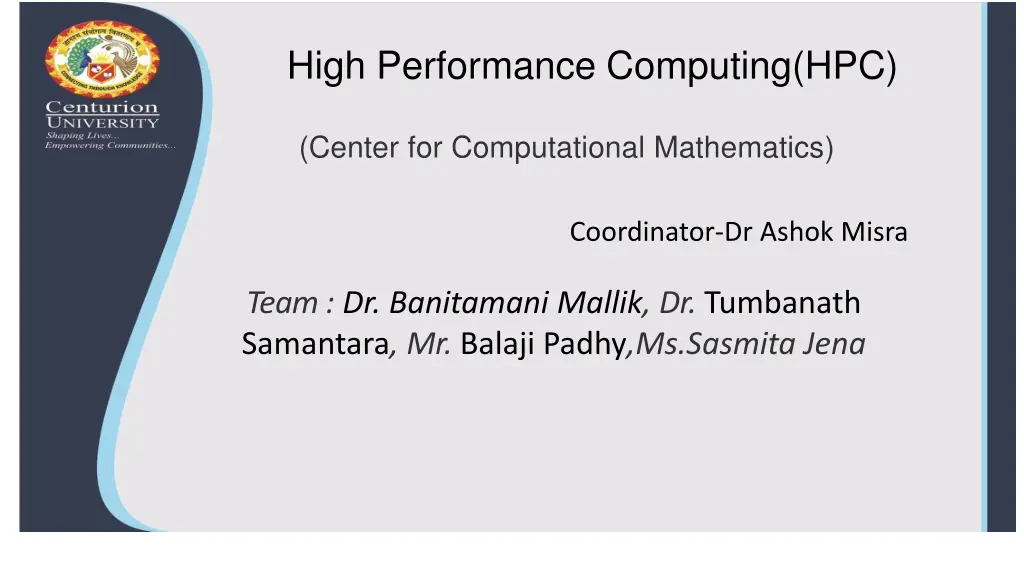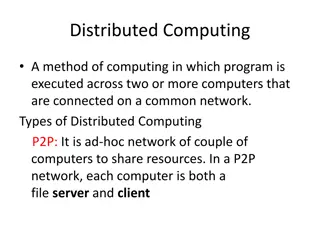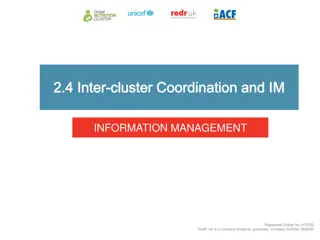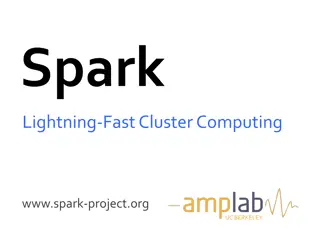
Understanding Cluster Computing and its Applications
Explore the world of cluster computing through this detailed overview. Learn about the architecture, benefits, and applications of clusters in high-performance computing. Discover how clusters enhance computational ability, processing speed, and scalability while being cost-effective and resilient to node failures. Dive into applications like discrete event simulation, e-commerce, and global climate modeling that benefit from cluster computing technology.
Download Presentation

Please find below an Image/Link to download the presentation.
The content on the website is provided AS IS for your information and personal use only. It may not be sold, licensed, or shared on other websites without obtaining consent from the author. If you encounter any issues during the download, it is possible that the publisher has removed the file from their server.
You are allowed to download the files provided on this website for personal or commercial use, subject to the condition that they are used lawfully. All files are the property of their respective owners.
The content on the website is provided AS IS for your information and personal use only. It may not be sold, licensed, or shared on other websites without obtaining consent from the author.
E N D
Presentation Transcript
High Performance Computing(HPC) (Center for Computational Mathematics) Coordinator-Dr Ashok Misra Team : Dr. Banitamani Mallik, Dr. Tumbanath Samantara, Mr. Balaji Padhy,Ms.Sasmita Jena
Contents Cluster Computing Introduction to Cluster Computing Motivation behind Cluster Computing Applications Advantages Scalable Parallel Computer Architectures Cluster Computer and its Architecture, Challenges Classifications Components for Clusters Cluster Middleware and Single System Image Resource Management and Scheduling (RMS)
Lecture 1 Introduction to Cluster Computing Motivation behind Cluster Computing Applications Advantages
Introduction What is cluster computing? A computer cluster consists of a group of loosely or tightly connected computers that work together so that, in many respects, they can be viewed as a single system. The components of a cluster are commonly, but not always, connected to each other through fast local area networks. Clusters are usually deployed to improve performance and/or availability over that provided by a single computer, while typically being much more cost-effective than single computers of availability. comparable speed or
Contd Cluster consists of: Nodes( master + computing ) Network OS Cluster middleware: Middleware such which permits clustering programs to be portable to a wide variety of clusters Cluster Middle ware High Speed Local Network as compute MPI CPU CPU CPU Cluster
Motivation behind Cluster Computing Some motivational features of it are Increase computational ability High Processing speed Cost effective Approach Flexibility to scale up/down resources requirement Node Failure Resistant
Contd. Minimum maintenance compared to standalone computers Handling of critical real time applications Improved network Technology Single System Image Easy to deploy
Applications Discrete Event Simulation E-commerce Earthquake Simulation Google Search Engine Global Climate Modeling Image Rendering
Contd Parametric Simulations Protein Explorer Protein Dynamics and Biocatalysis Scientific computation Virtual Materials Design and Processing
Advantages Great Capacity- : A cluster has a great capacity to solve a complex problem. High Performance- Cluster is a group of interconnected computers, connected with a high speed LAN to enhance its processing power. So operations are optimized.
Contd Cost Efficiency-: In a cluster hardware and software cost is comparatively much less than a supercomputer Scalability-Extra nodes can be added to speed up the work process.
Contd Manageability- If a node fails or requires maintenance, then other computers perform its load. High Availability of Resources- Due to fault tolerance nature in a cluster, a fault in one node will never affect its availability. In that situation, other components would still be available to the user and hence improves server availability.






















